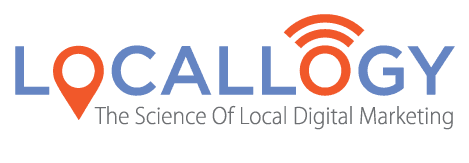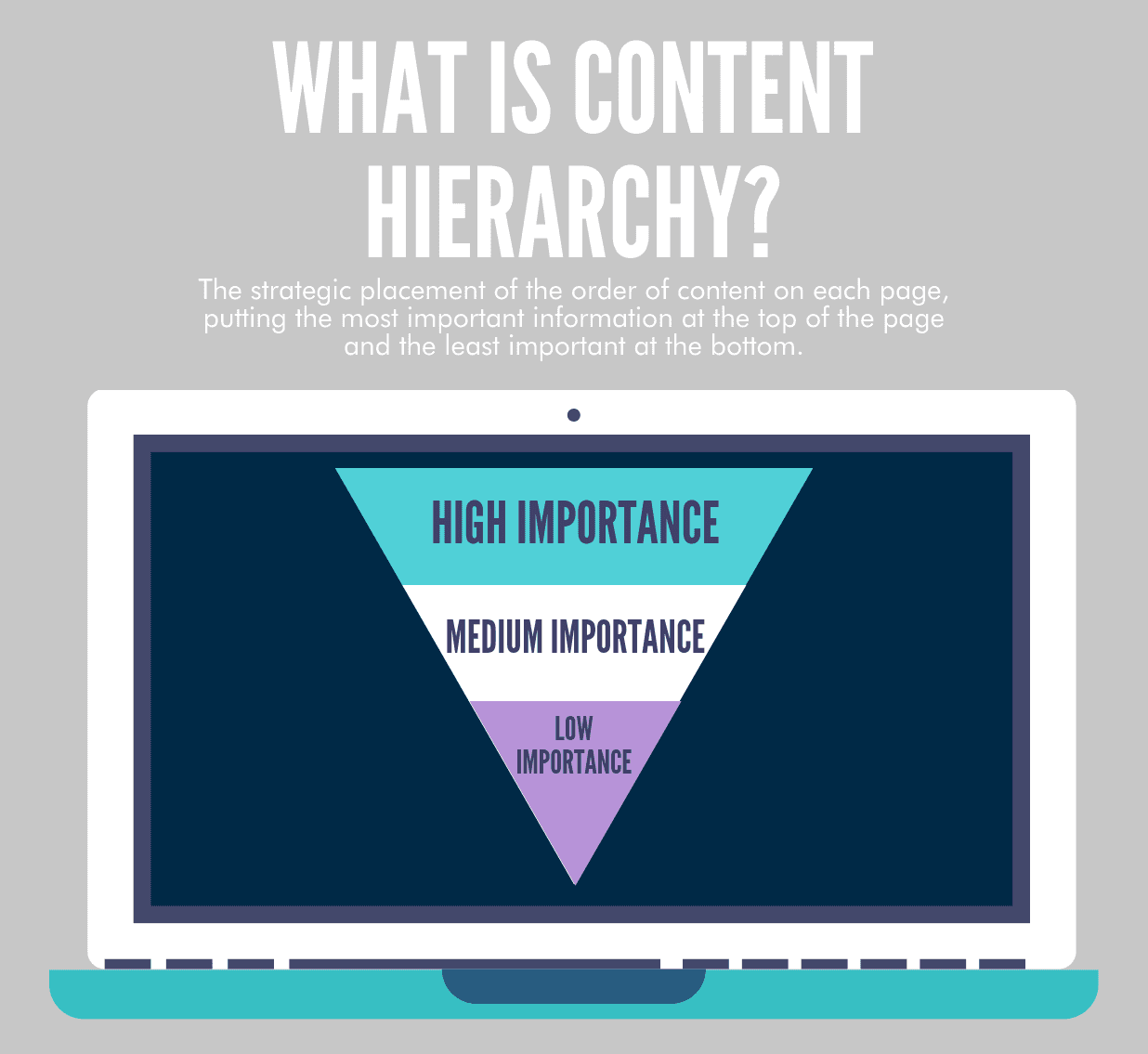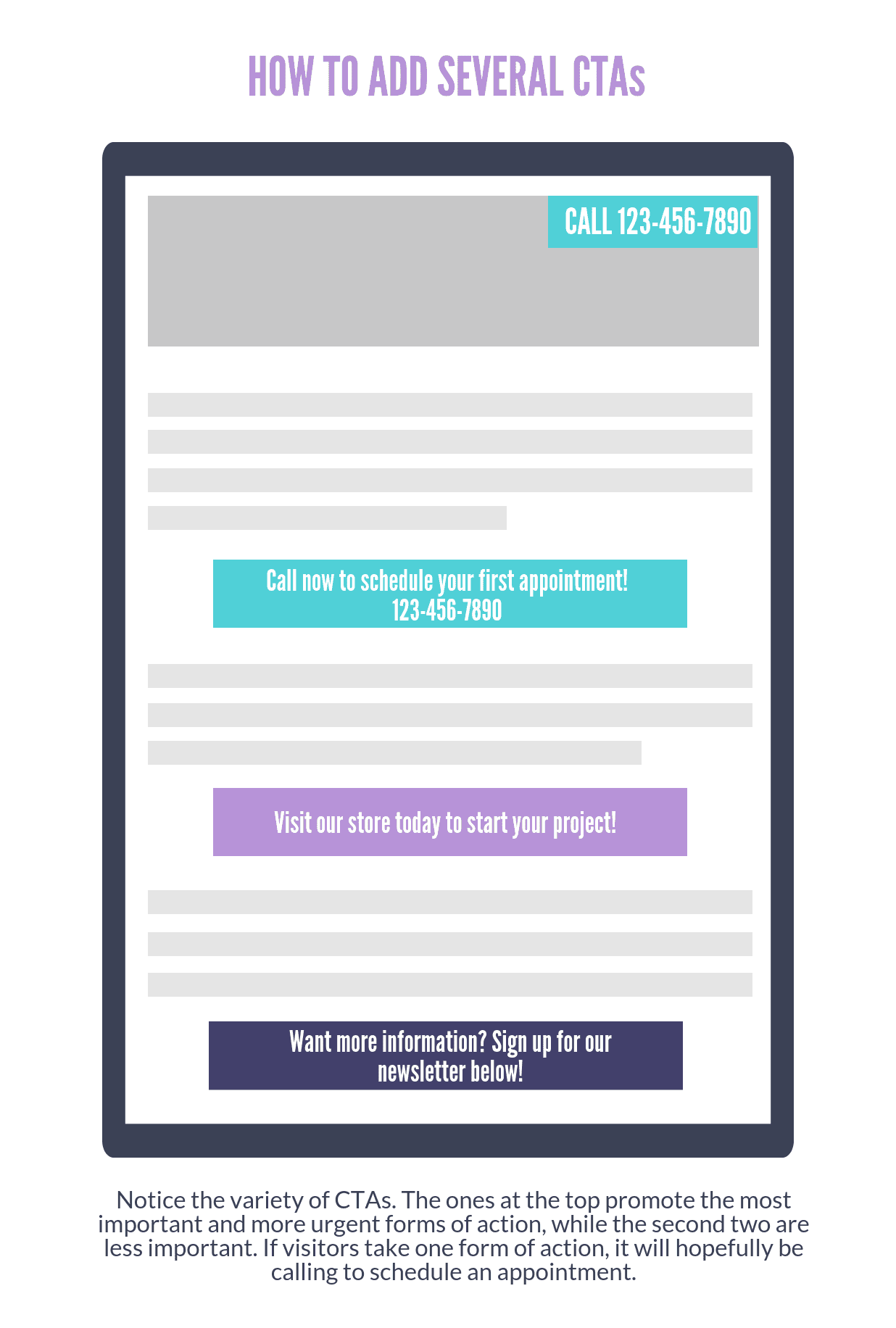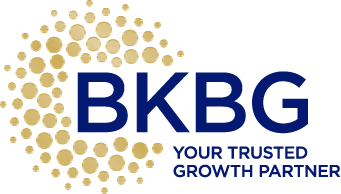What is Content Hierarchy? Everything You Need to Know
We’re all familiar with the concept of saving the best for last. But when it comes to the content on your website, your approach should be the opposite. The order in which content appears on your site can have a strong influence on the rate of conversion your website sees. This concept is known as content hierarchy.
Whether you’re a business owner who is creating service pages on your website or you’re just running a personal blog, content hierarchy is something that affects the success rate of your web pages.
What is Content Hierarchy?
Content hierarchy is an element of content marketing that involves the strategic placement of the content on each web page, putting the most important information at the top of the page and the least important at the bottom. This is done through all content-related mediums, from website descriptions to marketing emails.
Even this blog is an example of content hierarchy. Notice how we put the most important info—the explanation of what content hierarchy is and why it’s important—at the top of the page, while in-depth info is farther down, for those who want to learn more than the basics. If readers walk away after the first few paragraphs, they still have the gist of the content.
Why is it Important?
These days, people lose interest in what they’re reading more quickly than ever, thanks to an overwhelming amount of information available in an instant. In fact, the average bounce rate across all industries is just below 50%.
Think about your own internet habits. You probably read the first few paragraphs before determining whether you want to read on. Or maybe you just scan the subheadings on each section to see if it’s worth your time. This is how most people consume content so you can see why it’s important to put the information you want consumers to read most at the top of the page.
With your content strategically ordered from most to least important, you have a better chance of attracting consumers’ attention and encouraging them to stay on your page longer. And even if consumers are only on your page for a few seconds to read the first few lines of text—they’ll get the information they were looking for.

How Does Content Hierarchy Affect Conversion?
Content hierarchy is all about placing your content in a way that grabs the attention of readers and gets them to stay on your site, consuming more information. You want build a relationship of trust with the reader as quickly as possible—in other words, near the top of the page. If you can keep their attention long enough and establish your site as a reliable source of information, you have a better chance of getting them to take action now or come back to you in the future.
Simply put, the right content hierarchy works to keep people on your page and consuming your information for as long as possible. In the end, hopefully you have provided what they were looking for and have compelled them to buy in to your product or service. This is why content hierarchy is important to a well-converting web page.

How do You Determine Your Content’s Level of Importance?
When you’re deciding on the order and placement of your site’s content, ask yourself: If visitors only take away one thing from my site, what do I want them to know? This will likely be your most important content and should be placed highest on your page. From there, think about all the information you want to include on the page and rank it from most important to least, while still keeping flow in mind. That is, make sure the content still makes sense in the order you choose.
If you’re finding yourself stuck on determining the order of information, try doing a search for similar subjects. This will show you the types of questions people are asking about your product or service and will give you valuable insight as to what the most popular topics are.
Here’s a general outline of content hierarchy for a service page on a business’s website:
- Establish a connection with the customer by relating the service to a common problem they have.
- Explain the service that’s being offered. What unique features do you provide?
- Describe why your service is different than your competitors and what the customer will gain from your service.
- Answer any additional FAQs.
- Include a friendly reminder of who you are in a brief business summary.
And don’t forget one of the most important pieces of content on your site – the call-to-action.
Decide on a Call-to-Action
We already touched on why content hierarchy is important to conversions, but how exactly do you work a call-to-action (CTA) into your hierarchy?
The first step is deciding on the action you want your site visitors to take. Do you want people to sign up for a newsletter? Call you to schedule an appointment? Your CTA should plainly explain the next steps the reader should take and it should first appear near the top of the page. Your main CTA or secondary CTA’s can then appear again throughout the page at appropriate intervals.
If you only have one CTA you want to focus on, continue to use the same one throughout your page. However, if you have several items you want to highlight, place them in the order of importance and put the less important ones farther down on the page.
Here is an example of how you can incorporate three different CTA’s of varying importance on a single page.
Like your content, CTAs follow the same hierarchical rules, and should always be placed in the order you want action to be taken.
Don’t Forget Visual Hierarchy
Content hierarchy doesn’t just include text. It also includes the visuals that grab readers’ attentions, from images and videos to logos and notifications. Visuals are a great way to draw attention to the points you want to highlight most, such as your CTA or a graphic that illustrates your main point.
While visual hierarchy can get very complex (think of the psychology that goes into professional graphic design) there are some simple, common-sense rules you can follow.
- People read bigger things first. Use your largest headlines and images to convey the most important points.
- The eye is naturally drawn to bright colors and contrasting colors. This is an easy way to attract the reader’s attention to several pieces of information while still putting emphasis on the most important.
- Typeface is important. Using a select variation of typefaces can communicate the level of importance in each section of your site’s copy.
Have a Game Plan
Even if you haven’t given your site’s content hierarchy much thought, it’s still affecting the success of your website and its number of conversions.
The next time you publish a page on your site, make sure you have a plan for the hierarchy of your content beforehand. And when you’re ready to tackle your existing webpages, rearranging the content will be relatively easy and can have a positive impact on the page’s performance.
Get the Latest Content in Your Inbox
Want to be the first to know about new content? Sign up to get our weekly blog posts sent to your email!







